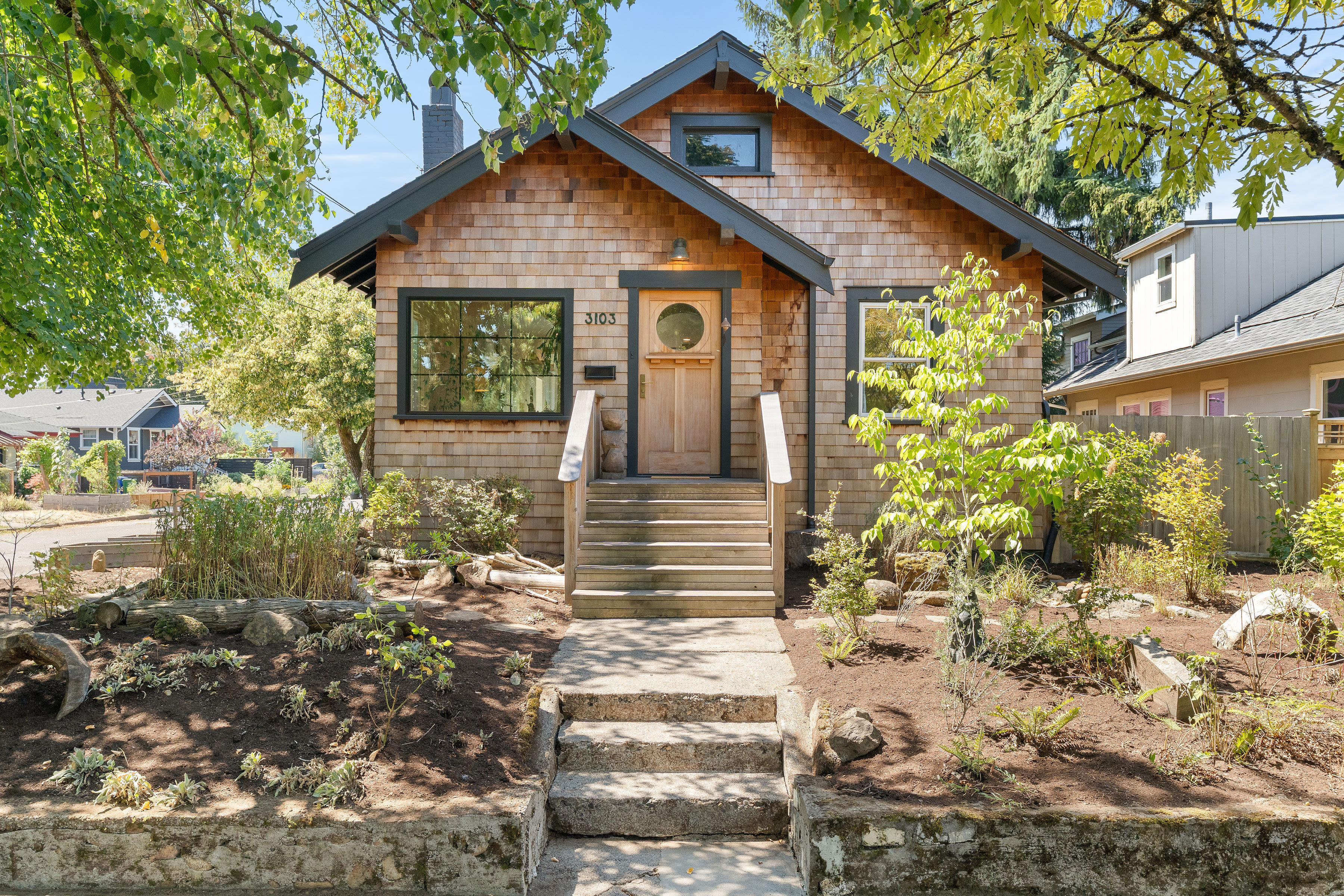How to Turn That Property into an Income Stream, Portland Style

Shortstack's "building blocks" of 1-, 2- and 3-bedroom units can be combined into dozens of different building formations.
Image: Michael Novak
Say you’re in the market for a nest egg or comfortable retirement, and also happen to be in possession of a single-family home in Portland. Previously, your best option was to sell and pocket the cash. Now, thanks to a series of changes to Portland’s building code and zoning to encourage housing density, another option has emerged: becoming your own developer.
A Portland company called Shortstack is here to help interested homeowners add apartments to their properties (typically behind an existing home), sometimes even tearing everything down to erect a small multiunit building. Shortstack determines what apartment configurations will actually fit on the lot and provides several housing options—including studio and one-, two-, and three-bedroom layouts—that can be mixed and matched to fill lots of varying sizes. Shortstack, whose name is a reference to the three- to five-story midrise buildings, also offers designs for multiple buildings on one property with thoughtfully shared common spaces and native outdoor greenery.
The Shortstack experience is a profound upgrade to the multiyear slog of homeowners watching their bank accounts dwindle while paying designers and engineers long before ground is even broken, all while wading through the vagaries of local building codes. Mere mortals abandon the process. “Infill development is notoriously high-touch and tricky,” says Shortstack cofounder Anna Mackay, who calls her line of work social impact development. “It felt really crucial to take the teeth out of that process as much as possible to foster more development.”
The company took form back in 2020, when Mackay, whose development company is called Sister City, brainstormed with cofounder Jessy Ledesma, principal at HomeWork Development, which specializes in affordable housing and infill projects. (Shortstack is officially a joint venture between Sister City and HomeWork.) The duo’s mission borders on public service, with the aim of creating a type of housing that’s rare around town: two- to 20-unit buildings of reasonably priced housing, especially three-bedrooms, which are direly needed. “It’s a market that hasn’t gotten a lot of personalized attention in the past,” says Carrie Strickland, principal at Works Progress Architecture, the firm responsible for Shortstack designs. “We really homed in on that missing middle. In Portland you either have single-family homes or very large multifamily projects, and that in-between wasn’t happening often.”
Shortstack is currently doing proof of concept with two projects, a 35-unit build on SE Belmont and a 36-unit development in North Portland’s Boise neighborhood, both on relatively small lots. “It’s real-time research and development, so when our product is officially available, the kinks are worked out,” says Mackay, who built Chiles House, a 27-unit affordable housing project in Southeast Portland, with Catholic Charities last year. “It’s a relatively good dupe for what Shortstack aims to be.”
Customers will eventually get a development playbook, making construction a more feasible endeavor. The stacks themselves are constructed from mass timber, including floors and roofs, and panelized wood stud walls, which allow flat-packing to the site and provide a warm, wooded aesthetic.
Mackay hopes that more normal people will become emerging developers, especially when they inherit homes. Instead of simply selling them, “Shortstack is hoping to be a tool for that entrepreneurial redistribution of wealth, and combating gentrification practices that have been really pervasive,” she says. “There are ways to keep that wealth in their family line and build wealth.” And just build. Literally.




